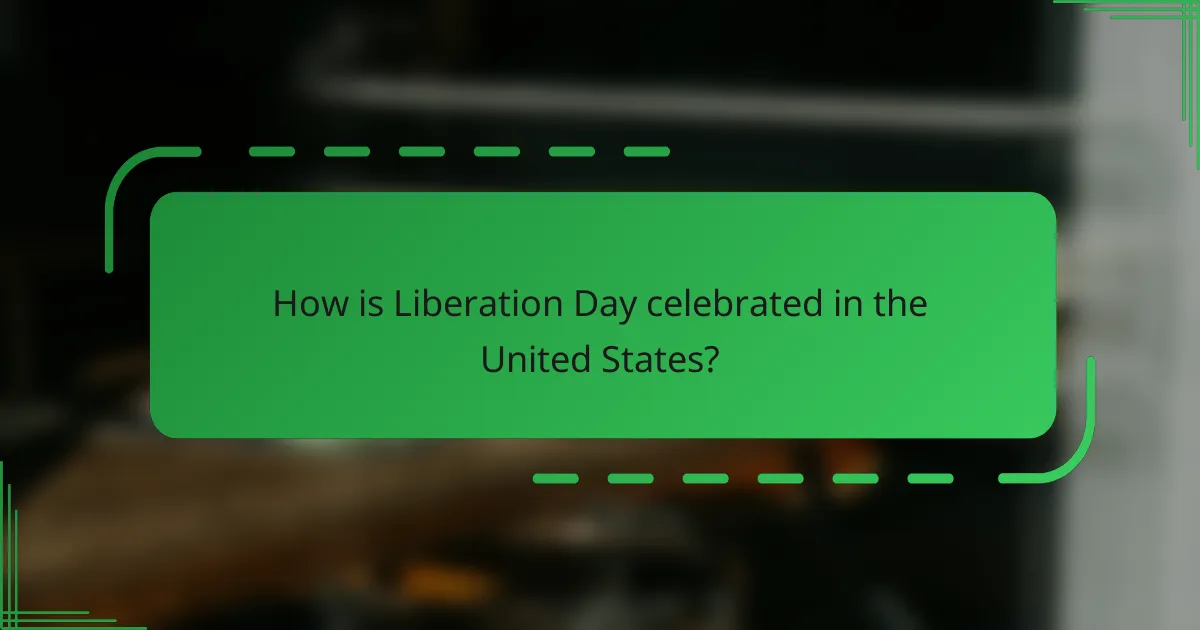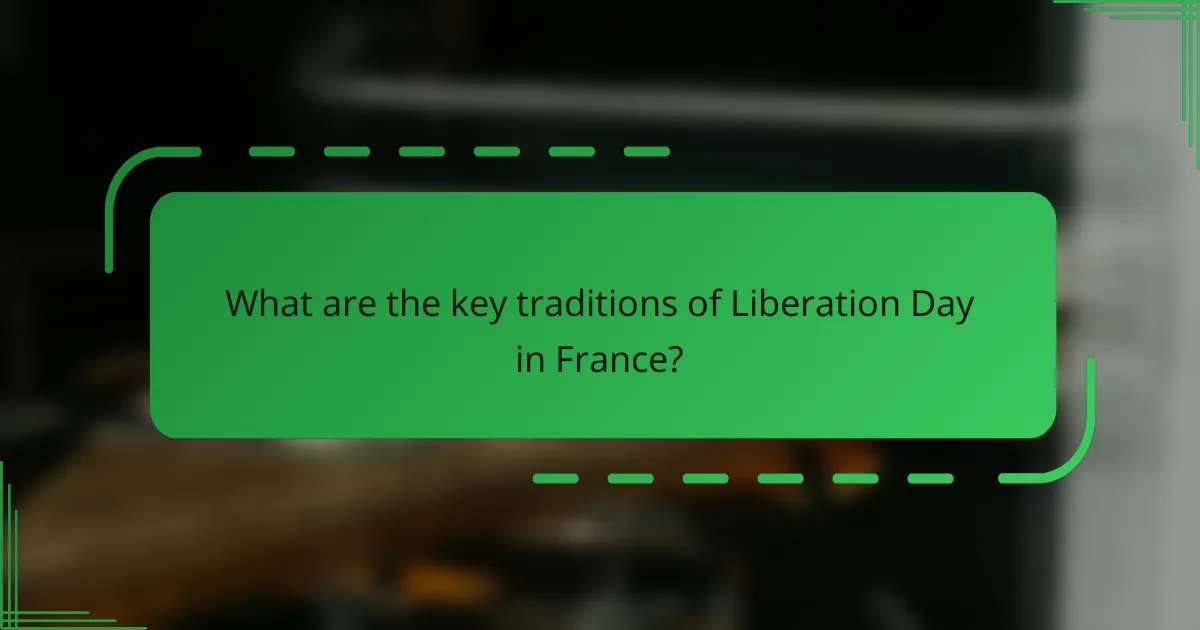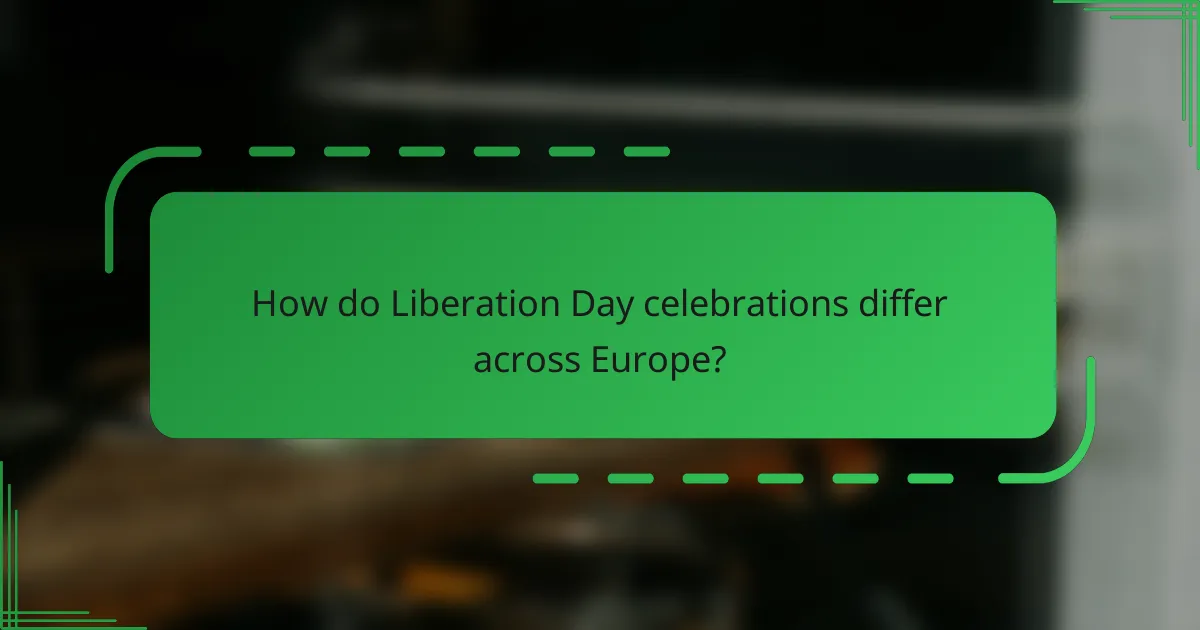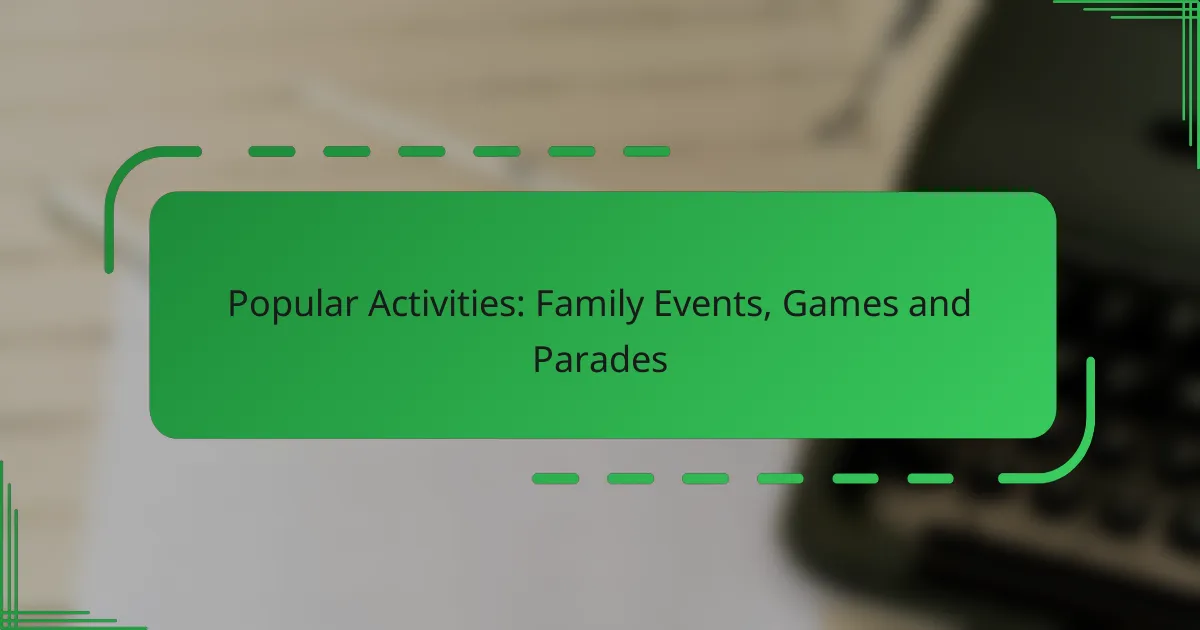Liberation Day celebrations around the world showcase a rich tapestry of traditions and cultural significance, varying greatly from one country to another. In the United States, the day is marked by patriotic events and community gatherings, while France commemorates its liberation from Nazi occupation with military parades and cultural performances. These diverse observances reflect each nation’s unique historical context and values, highlighting the universal themes of freedom and resilience.

How is Liberation Day celebrated in the United States?
In the United States, Liberation Day is celebrated with a mix of patriotic events and community gatherings that honor freedom and independence. The day often includes various festivities that reflect the nation’s values and history.
Parades and fireworks
Parades are a central feature of Liberation Day celebrations across many cities in the United States. These events typically showcase local bands, floats, and community groups, creating a festive atmosphere that brings people together.
Fireworks displays often accompany these parades, lighting up the night sky and adding to the celebratory mood. Many towns schedule fireworks for the evening, drawing crowds to parks and public spaces for a communal viewing experience.
Community festivals
Community festivals are another popular way to celebrate Liberation Day, featuring food stalls, live music, and various activities for families. These festivals often highlight local culture and traditions, allowing residents to connect with their heritage.
Activities may include games, craft booths, and performances, creating an inclusive environment where people of all ages can participate and enjoy the day together.
Historical reenactments
Historical reenactments are a unique aspect of Liberation Day celebrations, providing educational entertainment that brings history to life. These events often depict significant moments in the nation’s struggle for freedom, allowing participants and spectators to engage with the past.
Such reenactments can take place in parks or historical sites, often featuring actors in period costumes who narrate events and interact with the audience, making history accessible and engaging for all.

What are the key traditions of Liberation Day in France?
In France, Liberation Day, celebrated on August 25, commemorates the liberation of Paris from Nazi occupation in 1944. Key traditions include military parades, public speeches, and cultural performances that honor the sacrifices made during World War II.
Military parades
Military parades are a central feature of Liberation Day celebrations in France, showcasing the nation’s armed forces and honoring veterans. The most prominent parade occurs in Paris, where troops march down the Champs-Élysées, often accompanied by military vehicles and aircraft flyovers.
These parades typically include various branches of the military, such as the Army, Navy, and Air Force, reflecting France’s commitment to national defense. Spectators gather to witness the display of patriotism and to pay tribute to those who fought for freedom.
Public speeches
Public speeches play a significant role in the Liberation Day festivities, with officials and veterans addressing crowds to reflect on the historical significance of the day. These speeches often emphasize themes of resilience, unity, and the importance of remembering the past.
Local leaders, including mayors and military officials, typically deliver remarks at key locations, such as war memorials, fostering a sense of community and shared history. The speeches serve to educate younger generations about the sacrifices made during the war.
Cultural performances
Cultural performances are an integral part of Liberation Day, featuring music, dance, and theatrical presentations that celebrate French heritage and the spirit of liberation. Events may include concerts, street performances, and exhibitions that highlight the arts and culture of the time.
These performances often take place in public squares and parks, inviting community participation and engagement. They serve not only as entertainment but also as a means to reflect on the cultural impact of the liberation and to promote national pride.

How do Liberation Day celebrations differ across Europe?
Liberation Day celebrations in Europe vary significantly by country, reflecting unique historical contexts and cultural traditions. While some nations emphasize parades and public speeches, others focus on family gatherings and local festivities.
Variations in public events
Public events during Liberation Day often include parades, concerts, and ceremonies. For example, in France, the day is marked by military parades and fireworks, while in Italy, local communities may host smaller, more intimate gatherings. In contrast, countries like Norway celebrate with a nationwide parade featuring schoolchildren, showcasing a strong sense of national pride.
Some nations also hold memorial services to honor those who fought for freedom. These events can vary from grand ceremonies in capital cities to quiet tributes in smaller towns, reflecting the local significance of the day.
Regional food traditions
Food plays a central role in Liberation Day celebrations, with each country showcasing traditional dishes. In Belgium, for instance, people often enjoy regional specialties like waffles and chocolate, while in Greece, celebratory meals might include moussaka and baklava. These culinary traditions not only enhance the festive atmosphere but also connect communities to their cultural heritage.
In some regions, special pastries or cakes are prepared specifically for the occasion. For example, in the Czech Republic, sweet pastries known as trdelník are popular during this time, symbolizing the joy of liberation.
Distinct historical significance
The historical significance of Liberation Day varies widely across Europe, shaped by each country’s unique experiences during wartime. In France, the day commemorates the liberation from Nazi occupation in 1944, while in Hungary, it marks the end of Soviet control in 1989. These distinct narratives influence how each nation celebrates and remembers their past.
Understanding the historical context is crucial for appreciating the celebrations. In some countries, Liberation Day is a solemn occasion, while in others, it is a jubilant celebration of freedom and national identity, reflecting the diverse experiences of European nations.

What are the common themes in Liberation Day celebrations?
Common themes in Liberation Day celebrations include the commemoration of freedom, expressions of unity and national pride, and reflection on historical events. These themes resonate across various cultures, highlighting the significance of liberation in shaping national identity.
Commemoration of freedom
The commemoration of freedom is central to Liberation Day celebrations, as it marks the end of oppression and the beginning of self-determination. Events often include parades, speeches, and ceremonies that honor those who fought for liberation.
In many countries, such as the United States on Independence Day or Bulgaria on Liberation Day, fireworks and public gatherings symbolize the joy of freedom. These activities serve to remind citizens of the sacrifices made for their liberty.
Unity and national pride
Unity and national pride are prominently displayed during Liberation Day festivities. Citizens come together to celebrate their shared heritage and collective achievements, fostering a sense of belonging and national identity.
Flags, traditional attire, and communal activities like singing national anthems or participating in cultural performances enhance this spirit of unity. For instance, in countries like India, the Republic Day parade showcases the diversity and strength of the nation.
Reflection on history
Reflection on history is a key aspect of Liberation Day, as it encourages citizens to remember the struggles and victories that led to their freedom. Educational programs, documentaries, and discussions often accompany the celebrations to deepen understanding of the past.
In many nations, memorials and monuments are visited to honor those who sacrificed for liberation. This practice not only pays tribute to historical figures but also instills a sense of responsibility in current and future generations to uphold the values of freedom and justice.

What are the challenges faced during Liberation Day events?
During Liberation Day events, organizers often encounter challenges such as security concerns and weather-related issues that can impact the overall experience. Addressing these challenges is crucial for ensuring a safe and enjoyable celebration for all participants.
Security concerns
Security concerns are a significant challenge during Liberation Day celebrations, as large crowds can attract potential threats. Organizers must implement comprehensive security measures, including crowd control, surveillance, and emergency response plans.
It is advisable to coordinate with local law enforcement and emergency services to establish a clear security protocol. This might include checkpoints, bag checks, and the presence of security personnel throughout the event area to deter any potential incidents.
Weather-related issues
Weather-related issues can greatly affect Liberation Day events, as adverse conditions such as rain, extreme heat, or storms may deter attendance or disrupt planned activities. Organizers should monitor weather forecasts closely in the lead-up to the event.
Having contingency plans is essential. This could involve securing tents for shade or shelter, providing hydration stations, and establishing a clear communication strategy to inform attendees of any changes due to weather conditions. Additionally, considering the typical climate for the date can help in planning appropriately.



